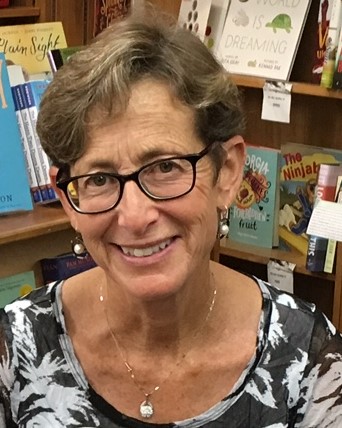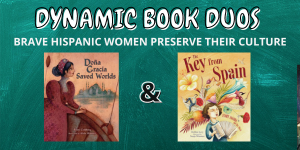
Please welcome authors Bonni Goldberg and Debbie Levy to Dynamic Book Duos – a blog featuring two books that pair together in a meaningful way along with educational activities to strengthen reading skills. This week’s pairing focuses on two brave, Hispanic women who preserve their shared culture.
Perfect Pairs: Two Brave, Hispanic Women Preserve Their Shared Culture
Together, Doña Gracia Saved Worlds written by Bonni Goldberg and illustrated by Alida Massari and The Key from Spain written by Debbie Levy and illustrated by Sonja Wimmer offer a fascinating and dramatic introduction to Sephardic Jewish culture through learning about two strong Hispanic women, Renaissance renegade, Doña Gracia and beloved modern singer, Flory Jagoda. In addition, together the pair serves as a springboard for readers to look at how culture and traditions are passed on from one generation to the next.
At a time when people believed that women weren’t as clever as men, Gracia protected her people and preserved Sephardic Jewish culture even though it was against the law. Hundreds of years later, after surviving another kind of expulsion edict, Flory Jagoda became known as the keeper of the flame of Sephardic music, as well as of the Ladino language that Gracia spoke.
Book 1: Doña Gracia Saved Worlds
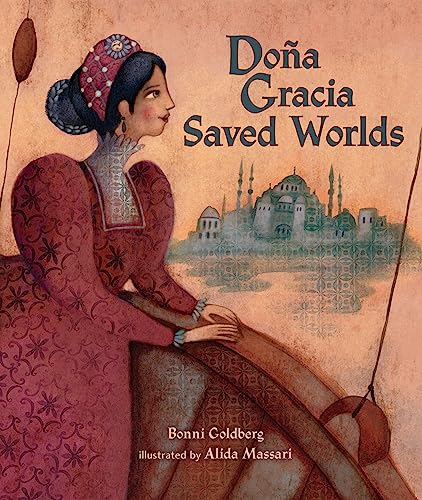
This is the first picture book to introduce Doña Gracia. Gracia lived in 16th-century Portugal when it was against the law to be Jewish. Even Gracia’s Jewish name was a secret. But she and her merchant husband persuaded the king to protect all the secret Jews in Portugal.
When she was only 25 years old, Gracia’s husband died. Everyone was shocked that he left her in charge of his business. In those times no one believed a woman could run an international business, but Gracia did it.
Eventually, being a secret Jew became too dangerous. To escape from Portugal, Gracia defied kings and then risked her own life to help other Jews escape by smuggling them out of Portugal on her spice ships in the night.
Forced to move for one land to another, for her own safety, only when she got to Turkey could she finally live freely as Jewish. There, Gracia used her resources to print Jewish books, build synagogues, and schools. Gracia’s is a timeless tale of identity, community, and courage.
Book 2: The Key from Spain
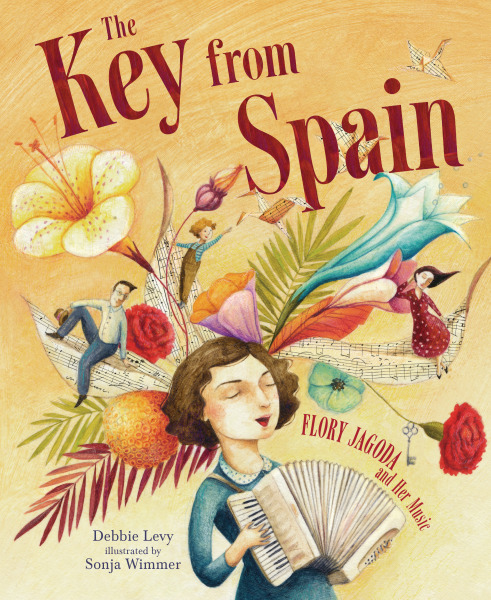
When Flory’s ancestors were expelled from Spain during the time of the Spanish Inquisition, they took with them their two most precious possessions: the key to their old house and the Ladino language. They lived first in Turkey, and then settled in Bosnia. There, in the village of Vlasenica, the family became known for making music — for Sephardic and Bosnian melodies, for trilling voices, for guitars and mandolins, for tambourines pulsing out rhythms.
Flory was born in and grew up in Vlasenica, but World War II led to another expulsion. When she left Bosnia, and then departed Europe after the war, she carried Ladino with her, along with her precious accordion. Unlike those ancestors who had been forced out by the Inquisition, she carried no key — not from Spain, and not from Vlasenica. But she did carry her family’s music with her to America, and it became a different kind of key. With this key of music, she unlocked the door to the lives in Bosnia, and in Spain, that she and her ancestors had once enjoyed.
Flory Jagoda became known as the keeper of the flame of Sephardic music, as well as of the Ladino language. She brought Sephardic music to people everywhere, around the country and the world, on stages, in schools, and in homes.
Educational Activities:
Read Both Books and Discuss:
- What are the similarities? What are the differences?
- How are Gracia and Flory alike? How are they different?
- How was each of them brave?
- How are you brave?
Passing on Traditions
It was important to Gracia and Flory to pass on their Sephardic culture. Gracia helped print Jewish books, build synagogues and Jewish schools. Flory passed on music and songs in the Ladino language.
1. Ask students to think about or brainstorm things that their family does, either year after year, on particular holidays, or all the time just because it’s part of what makes their family their family.
2. Ask students to pick one of them and draw or write about how they would like to pass on the tradition (If any students don’t have existing traditions, ask them to draw or write about a tradition they would like to start).
Learn and Listen to Ladino
Ladino is the language Gracia and Flory share. It’s a combination of parts of other languages including Hebrew, Spanish and many more. Here is the chance to learn a few Ladino phrases and to see and hear Flory sing her most famous Ladino song.
Learn Some Ladino
(excerpted from myjewishlearning.com)
Ladino Pronunciation Guide
j as in French “bonjour”
h as in English “hot”
Haberes buenos!
!חאביריס בואינוס
Pronunciation: ha-BEAR-es BWE-nos
Meaning: Good news!
How to use it: This can be used either to announce good news or as a way to ward off bad news.
Engleneate!
!אינגליניאטי
Pronunciation: en-glen-AY-a-te
Meaning: Have fun!
Literal translation: Entertain yourself!
Sano i rezio!
סאנו אי ריזייו
Pronunciation: SA-no ee REZ-yo
Meaning: Farewell!
Literal meaning: May you be healthy and strong
Kome kon gana!
!קומי קון גאנה
Pronunciation: KO-may kon GA-na
Meaning: Bon appetit!
Literal translation: “Eat with desire.”
Creative Conversations
1. As a whole group, make a list of 3-5 questions you think Gracia might like to ask Flory and a list of 3-5 questions Flory might like to ask Gracia.
2. Divide students into two groups.
3. One group will make up Flory’s answers to Gracia’s questions and the other group will make up Gracia’s answers to Flory’s questions.
4. Choose a medium (write, perform, record, or video) to present the conversation of questions and answers between Gracia and Flory.
Bonus: If the groups have completed the Learn and Listen to Ladino activity, they could add Ladino phrases into the conversation.
More Picture Books
This curated list of picture books features Secret Jews from the past and their legacy in the present. The stories introduce some of the history, culture, and life of Sephardic Jews.
Meet the Authors:
